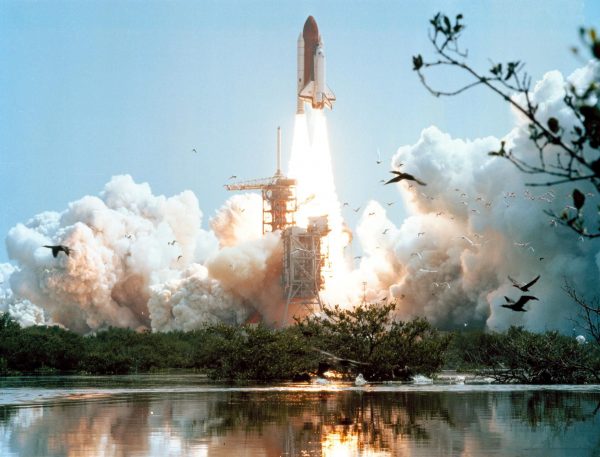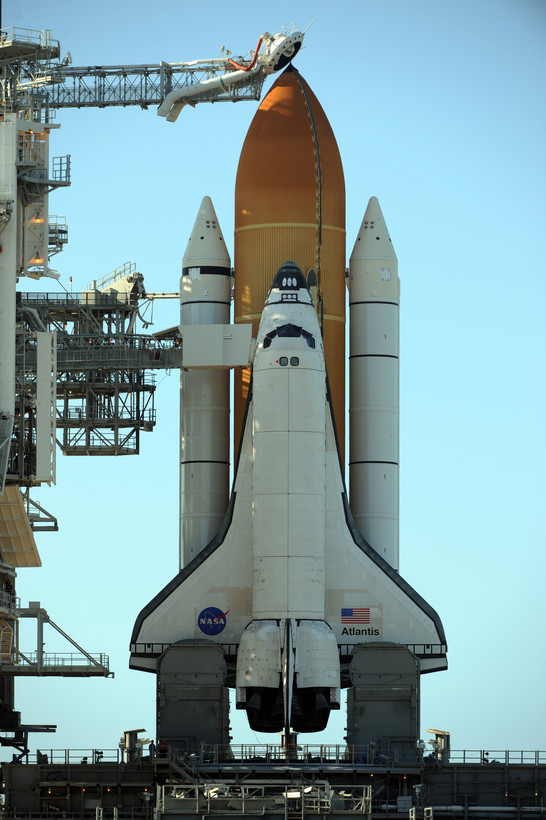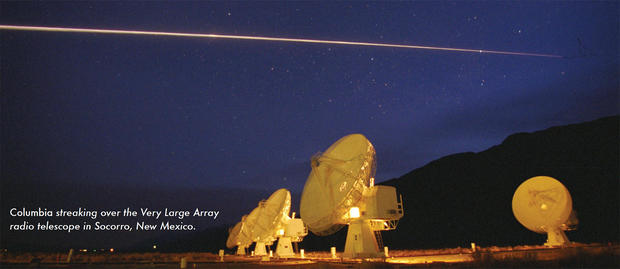This Close-Up of a Space Shuttle Taking Off Is Truly Out Of This World — Sorry But It’s True – Newsweek
A viral video depicting a close-up of a Space Shuttle launch has its origins in a 2010 celebration of the 30-year program from the months leading up to the Space Shuttle’s retirement after its 135th and final launch in July of 2011.
The extreme close-up of a Space Shuttle launch popped up on numerous viral aggregators Wednesday, including in a Reddit post by user bhavjotpahuja (who has uploaded dozens of other viral videos and motivational content), but has largely appeared unattributed and partially cropped. The most likely source for its viral spread is a Monday tweet by Twitter account Wonder of Science, which also revealed the original source—stripped from most subsequent posts—for the Space Shuttle launch video.
The footage was originally released to the public by NASA’s Glenn Research Center in a video titled “‘Best of the Best’ Provides New Views, Commentary of Shuttle Launches.”
The video reveals the astonishing complexity and resources required to launch a payload into space, including the more than 1,000 gallons of liquid propellant and 20,000 pounds of solid fuel burned per second during liftoff, propelling the shuttle into orbit in a little over eight minutes, at speeds approaching five miles per second.
The technical commentary is provided by Kevin Burke of NASA’s Jet Propulsion Laboratory and aerospace engineer Matt Melis, who was part of the Space Shuttle program and the Columbia Accident Investigation team after the shuttle crashed in February 2003, resulting in the deaths of its seven crew members.
“What you’re going to see is what I consider to be the best-of-the-best, state-of-the-art imagery, on both film and high-definition video, that the Space Shuttle program is capable of producing today,” Melis says, introducing footage originally used in technical analyses.
Each shuttle launch is documented by more than 125 cameras, with the viral close-up clip taken from camera view Echo-19, a 16mm engineering camera capturing footage at 400 frames per second for slow-motion analysis of Engines 1 and 3 ignition.
“The purpose of this one is to check to make sure ignition is going off okay, which is what you’re seeing here: main engine start is just happening and you can see the engines are starting one at a time,” Melis narrates.

The footage captures the six seconds prior to liftoff, as the shuttle’s main engines ignite, followed by the solid rocket booster, which detaches after launch and is retrieved and refurbished for subsequent missions.
“Great, great photography going on here,” Melis says. “You can see all this flow phenomenon going on inside the engines.”
Melis and Burke note several aspects of the launch, including the puffs of cloud-like vapor released from the oxygen fuel umbilical and descriptions of the time codes (cropped from the contextless viral excerpts of the video) used to sync footage across the fleet of cameras.
Also notable are the flying sparks, which aren’t used to ignite the fuel, as is commonly supposed. Instead these Radial Outward Firing Igniters (more commonly referred to simply as “sparklers”) are, according to Melis, “there to make sure any unburned hydrogen gets ignited before it floats around and collects some place where it can ignite later and cause problems.”
The original NASA video includes footage from shuttle missions STS-114 (the first launch after the destruction of Columbia), 2007’s Atlantis mission STS-117 (the 250th orbital human spaceflight, which delivered a solar array to the International Space Station) and mission STS-124, which delivered a Japanese “Experiment Module” to the ISS. The close-up video of the shuttle launch comes from one of these three missions.
While posted to Reddit and other content aggregators stripped of information, redditors were quick to fill in some of the blanks. The post prompted some interesting responses, including museum recommendations, technical explanations recollections of past Space Shuttle launches.
In response to the video, shared a photograph from his duties with the 106th Rescue Wing of the New York Air National Guard, which were posted on standby for shuttle launches in case of an emergency necessitating a launch abort.

“HH-60 and HC-130 aircraft would be on standby or loitering in the area, with Pararescue Jumpers and Combat Rescue Officers ready to go after them. I was just there to document,” Muncy told Newsweek. “I was lucky enough to be able to photograph STS-132 and STS-135, which were the last launches of the Atlantis.”
While the Space Shuttle is retired, NASA is still developing its successor, known as the Orion Multi-Purpose Crew Vehicle, which had its first test launch in December of 2014. Three Orion spacecraft are currently under construction and will be used in the Artemis program that intends to return to the surface of moon by 2024. Artemis 1, which will orbit the moon, was scheduled to launch in April 2021, but may be delayed by complications caused by the ongoing coronavirus pandemic.






